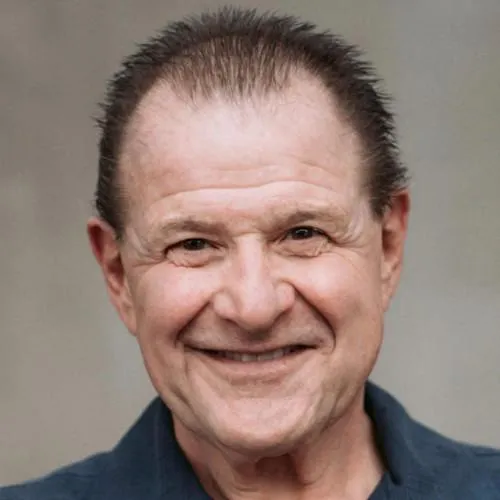The Human View

Of Cosms Micro and Macro
The company body is a macrocosm of the human body, and there is an explicit correlation between the financial health of a company and the well-being of its people.
The challenge has long been how to map that correlation: how to define Human Resource indicators that are meaningful, measurable, and manageable. After all, humans are the primary resource, without which non-human resources retain neither coherence nor value.
Microcosms and macrocosms are reflections of one another. Both words derive from the Greek kosmos, which means “world,” plus “small” and “large,” or “whole.” The systemic relationship between the two is essentially the same, just operating on different scales.
Living on purpose
The design and intention of the human being is to experience the world through an harmonious expression of personal joy, interpersonal relationship, and community function. Or to put it simply, we want to be the highest conception of who we can be, doing what we were meant to do, in a place we love, with people we enjoy, on purpose.
The company’s world looks remarkably similar: it wants to operate as profitably as possible, producing its chosen goods and services, in markets where it thrives, with the best people it can attract, in alignment with a vision and a mission.
Health and profitability are states of being that result from systems (the human body, emotions, mind and spirit, and the company operations, culture, value proposition and vision) functioning in harmony with their design and intention.
Aligning complex systems
Human dis-eases of the body, the emotions, and the mind operate in conflict with the natural function of the microcosm, and company dis-eases of its operations, culture, and value proposition work against the natural function of the macrocosm. The microcosm and macrocosm are inextricably intertwined, and both operate more effectively when aligned with spirit, vision and a sense of mission.
The human being is a whole system, as is a company. Each part is designed and intended to work harmoniously for the highest and best good of the whole. Each part has its role and its function, and when any part is missing or impaired, the whole suffers.
Furthermore, the whole has to come first when considering the health of both humans and companies. The health of any part is secondary, yet to treat the part as separate or isolated from the whole system that it serves is to greatly increase the possibility of a faulty or incomplete diagnosis, which in turn risks a fatal outcome.
Laying hold of the obvious
“Well, Duh!” one might say. Yet these observations go to primary issues that are regularly ignored or forgotten as being causal (therefore strategic) while the majority of available resources are expended on secondary or even tertiary (therefore tactical) responses. We too often treat symptoms, not heal dis-ease; we too often fiddle with health/sick insurance, not help people stay healthy.
Healing one part helps the whole; healing the whole helps all the parts. We must shift our focus to the primary, foundational aspects of human health and its impact on and correlation to company profitability.
Since the human demand is theoretically infinite for health care services to treat the separate parts of ourselves, and the supply of health care resources and the money to pay for them is decidedly finite, where should we begin?
The cardinal viewpoint is that human health is no more a right than are company profits. A physician can no more grant health to a patient than an industry can grant profitability to a company. Personal health is sourced from within the human and company profitability is sourced from within the organization. Both must work together for optimal functionality.
Cultural wellness
A company culture that values each employee as an individual human, and that supports the individual’s unique expression of “humanness,” stands a far greater chance of navigating increasingly turbulent economic waters. Furthermore, it will do so with far greater equanimity and poise – and with superior profitability – than its competitors. Consider Southwest Airlines vs. the rest of the airline industry.
Having established a culture that values the individual, first, as a human - and the role of employee as derivative from the human - the company sets out to arrange its groups to optimize what may be called “organic coherence:” each employee’s position within the natural groupings of the organization optimizes the grouping, and the collection of groups working towards the articulated company mission are thus optimized as well.
Therefore, it behooves a company to consider that ROI will naturally result from investing in its workforce with respect to self-care, wellness, and personal responsibility as they manifest in the arenas of stress management, fitness, nutrition, and other lifestyle and medical factors.
The first question should thus be, not “will we get an ROI?” or “what is the ROI?” but rather “how do we get to company well-being?” Who can seriously doubt that improving the health of the workforce reduces health plan costs, absenteeism, workers comp costs, and turnover? Talk about maximum leverage! How well a company does at "getting to wellness" will determine the ROI, which for any given company can only be measured retrospectively. The good news is the vast majority of credible studies show ROI over 3 - 4 years of 3:1 to 5:1.
Healing the company from the inside out
Company leadership can be viewed as the brain of the company body; it coordinates the overall functioning. HR can be viewed as the heart; it facilitates the circulation of the body’s core resource: people. Finance can be viewed as the lungs, ensuring sufficient saturation of the circulatory assets. Operations would thus be the remaining organs and limbs. All of the parts must function holistically for the corporate body to thrive.
In the microcosm, the heart can't function without the mind and the lungs, but heart disease kills more people than diseases of the other two combined. In the macrocosm, sick workforces are debilitating companies across the country as health plan costs continue their upward spiral.
The HeartMath Institute has described the electromagnetic field of the human heart as being 5,000 times greater than the EM field produced by the brain. Heart health is core to the health of all the body's organs and tissues.
The last word
If humans are the "heart" of the company, then their health is core to the survival of the company body. But humans want to do more than merely survive, as Maslow posited. They want to thrive. Companies can do the same, but they must view their primary assets - their people - as humans in need of whole-health functionality. Then, and only then, will the macrocosm thrive, and mirror on a large scale the health of its member parts, to the applause of markets, the loyalty of customers, and the self-actualization of its human employees.

Mark Head
President
With 4 decades of combined experience in employee benefits consulting, wellness and health management, Head brings a unique combination of dynamic perspectives into a clear vision of where the future of health care is moving - and it's moving towards deeper human connection, awareness, and engagement...
Follow Us On
© 2015 - Present, MDH Consulting. All Rights Reserved.
